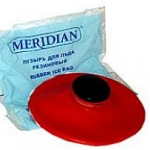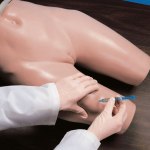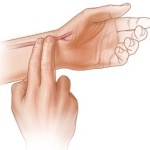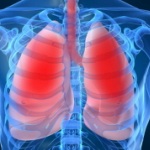 Treatment with medical leeches
Treatment with medical leeches
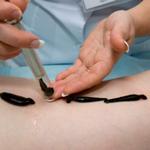
Currently, treatment with medical leeches (hirudotherapy) is used for hypertension, coronary heart disease, glaucoma, thrombophlebitis and vein thrombosis, hemorrhoids. As a goal from the use of leeches can be set:
- local bleeding;
- decrease in BCC (volume of circulating blood);
- decrease in blood clotting.
Contraindications to the use of medicinal leeches:
- anemia.
- Decreased blood clotting ability, including hemophilia.
- Increased sensitivity of the skin.
- Treatment with anticoagulants (anti-clotting drugs).
- General depletion of the body.
- Decreased blood pressure and a tendency to this condition (hypotension).
- Infectious processes in the body.
The secret of the salivary glands of leeches contains hirudin , a substance that can inhibit blood clotting and prevent the formation of blood clots. For therapeutic purposes, hungry leeches are used, which are able to suck up to 10 ml of blood. Before you start treatment with medical leeches, you should check their suitability. It is important to assess the condition of the leeches. The requirements are:
- the integument of the leech should be smooth and shiny;
- a pronounced touch reflex (the body of a leech becomes elastic, short and thick when touched);
- the leech must be active, mobile.
With effective suction, the leech, having saturated, disappears, but bleeding from the wound continues for another 6 to 24 hours. The total duration of the hirudotherapy procedure is from 15 to 60 minutes. Treatment with medical leeches is carried out only as prescribed by the attending physician.
Places for setting leeches:
- area of the mastoid process, along a vertical line 1 cm from the auricle;
- the region of the heart in the 3rd-5th intercostal space, 1 cm from the sternum;
- area of the liver along the costal margin;
- along the veins 1 cm from the passage of the vein (with thrombosis and thrombophlebitis);
- temporal region at the level of the eye incision along a horizontal line (with glaucoma);
- coccyx area and around the anus (with hemorrhoids).
Equipment for breast therapy
- a container with the required number of leeches (on average from 2 to 10);
- net;
- dressing package;
- sterile test tubes;
- sterile wipes;
- sterile cotton swabs;
- sterile gloves;
- tweezers;
- vial with 70% alcohol;
- ammonia;
- 40% glucose solution;
- warm boiled water;
- soap;
- kidney-shaped tray or other container with disinfectant for waste material.
Technique for setting medical leeches
- Reassure the patient and put him in a comfortable position.
- Put on sterile gloves and treat the area where the leeches are placed with sterile wipes soaked in warm boiled water. Wipe or pat the treated skin of the patient dry. Throw used wipes into a prepared tray with a disinfectant solution.
- Moisten the prepared skin area with 40% glucose solution.
- Catch the leech with a net from the container, place it in a test tube with the tail end down.
- Bring the tube to the skin area where the setting will be performed, firmly press the opening of the tube to the place where the leech is sucked.
- Make sure that the leech has bitten through the skin - with a positive result, wave-like movements of the body of the leech will appear.
- Carefully remove the test tube, thus freeing the leech from it.
- Place a sterile gauze pad under the tail of the leech (back sucker).
- Similarly, put the required number of leeches.
- Cover the leeches with a sterile cloth.
- After the appointed time, remove the leeches: if 15-25 minutes have passed from the moment of suction and the leech is not saturated with blood, it should be removed: wipe the surface of the leeches with a cotton swab dipped in ammonia. If the leeches are placed for 45-60 minutes, they will fall off on their own. Remove used leeches with tweezers in a container with disinfectant.
- Apply an aseptic pressure cotton-gauze bandage (dressing bag) to the bite site.
Disinfect the waste material with the appropriate exposure. After the hirudotherapy procedure is over, the leeches are disinfected and drained into the sewer.
